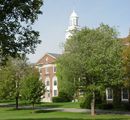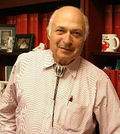Metals in living systems
Our symposium relates “metals”-a collection of positive ions enmeshed in a cloud of delocalized electrons to “living systems”-a concept defined as “open self organizing systems…alive and interacting with their environment…by means of information and material-energy exchanges” (Parent, 1996). Since “living systems” can either be a single cell or as organized as the mammalian brain-our talks will be focused on metals in the brain.This vast area includes the role of highly reactive alkali earth metals (sodium, potassium,calcium) necessary for neuronal and receptor signaling and transition metals(iron, copper, zinc) metals take much longer to part with electrons-but are critically important in both healthy and diseased brain This specific role of transition metals has been of particular interest to our laboratory and our speakers. All have been involved in determining the role of iron, copper,and zinc in normal and aging brain and how these relations alter cognitive and motor status. In order to determine these effects we have relied apon a number of different experimental techniques ranging from in vivo brain imaging and human subject studies (Susceptibility Weighted Magnetic Resonance Imaging) to direct regional analysis of autopsied human brain and experimental animals.
Dr.Kirsch will initiate the symposium by a review of the role of iron regulation in the mammalian brain, its compartmentalization, its forms, and the clinical effects of dysregulation
Matt Schrag will discuss the role of iron, copper, and zinc in the mammalian brain.Matt is a M.D./Ph.D. candidate whose publications have received worldwide attention
Dr.Claudius Mueller will continue with a discussion of the hemedegradation pathway in brain, the complementary roles of iron and copper
Grant McCauley will discuss the physico-chemical properties of iron, copper, and cobalt that in combination with other elements(sulfur for example) are essential for aerobic life
Dr.Kirsch will summarize the presentations and open the floor for questions directed to the panel.
Session organizer
Prof. Wolff M. Kirsch, MD is the Professor of Neurological Surgery and Professor of Biochemistry, the Director, Neurosurgery Center for Research, Training, and Education at Loma Linda University.
Confirmed speakers
- Dr.Claudius Muller, George Mason University: "The Cu/Fe relationship in living systems."
- Mr. Matt Schrag, "Zn,Cu,Fe in living systems."
- Mr. Grant McCauley, "Fe transport and quantitation in living systems."
- Prof. Wolff M. Kirsch, MD, Loma Linda University, "Metals in living systems-the iron-sulfur relationship."

